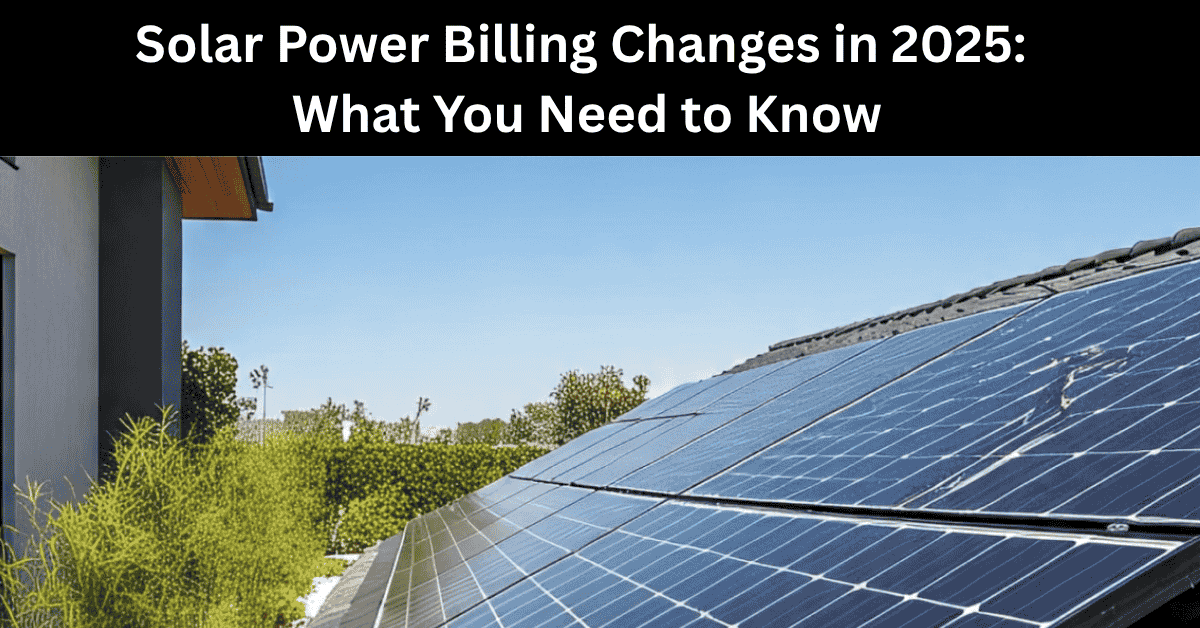Solar power is booming, and that’s great news for clean energy fans! But as more homes and businesses install solar panels, the government is making changes to how solar energy is billed. They’re moving from net metering to net billing to keep the electricity grid stable and fair for everyone. Let’s break down what this means, why it’s happening, and how it might affect you.
What’s Net Metering, and Why Is It Changing?
Net metering lets solar panel owners send extra electricity they generate back to the grid. In return, they get credits to lower their electricity bills. It’s been a popular way to encourage solar power, but with solar installations now producing 2,500 megawatts (MW), the grid is feeling the strain. Too much solar energy can make it hard to balance the grid, especially when demand changes.
The government isn’t getting rid of net metering—it’s just switching to net billing. This new system ties the value of your extra solar energy to dynamic energy prices, which adjust based on the market. This helps keep the grid stable and ensures fair pricing for everyone.
Why the Shift to Net Billing?
The shift to net billing is part of a bigger plan to modernize the energy system. Federal Energy Minister Sardar Awais Ahmad Khan Leghari recently shared this during a meeting at the Private Power and Infrastructure Board (PPIB). He explained that the government wants to make the grid more efficient and reliable as solar power grows.
Here’s why this matters:
-
- Grid Stability: With so much solar energy flowing into the grid, net billing helps manage the supply and prevent overloads.
- Fair Pricing: Dynamic pricing means you’re paid fairly for the energy you send to the grid, based on real-time market rates.
- Modernizing the System: The government is updating old energy systems to support clean energy while keeping costs low for consumers.
Big Changes in Energy Costs
The government has already made some bold moves to lower electricity costs. Since June 2024, they’ve:
-
-
- Cut 9,000 MW of expensive energy projects to save money.
- Lowered industrial power rates by up to 31% and other consumer rates by 14-18% using a Rs. 174 billion cross-subsidy.
- Offered surplus 7,000 MW of power to industries and farmers at affordable rates of 7-7.5 cents per unit without subsidies.
-
These changes show the government’s commitment to making energy more affordable while supporting the growth of solar power.
What Does This Mean for Solar Users?
If you have solar panels, net billing might change how much you earn from extra energy. Instead of fixed credits, your earnings will depend on market prices, which can go up or down. This could mean more money when demand is high, but less when it’s low. The good news? The government is focused on keeping the system fair and sustainable for everyone.
For those thinking about getting solar panels, this is still a great time to invest. Solar power saves money on bills and helps the planet. Just keep an eye on how net billing might affect your savings. Check out resources like the U.S. Department of Energy’s Solar Guide for tips on going solar.
Looking Ahead: A Brighter, Cleaner Future
The move to net billing is part of a bigger plan to make energy cleaner and more reliable. By updating how solar power is managed, the government aims to support renewable energy while keeping the grid strong. These changes might feel confusing at first, but they’re designed to benefit both solar users and the wider community.
What do you think about the switch to net billing? Are you a solar user, or are you considering it? Share your thoughts in the comments below and let’s talk about the future of clean energy!

